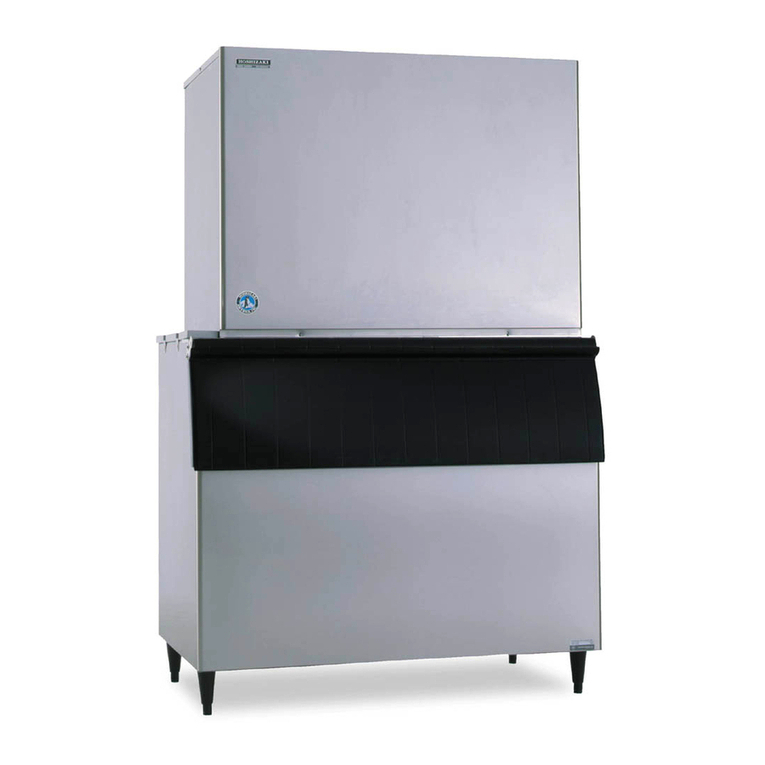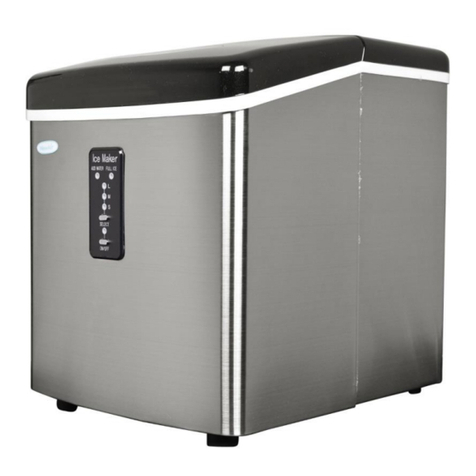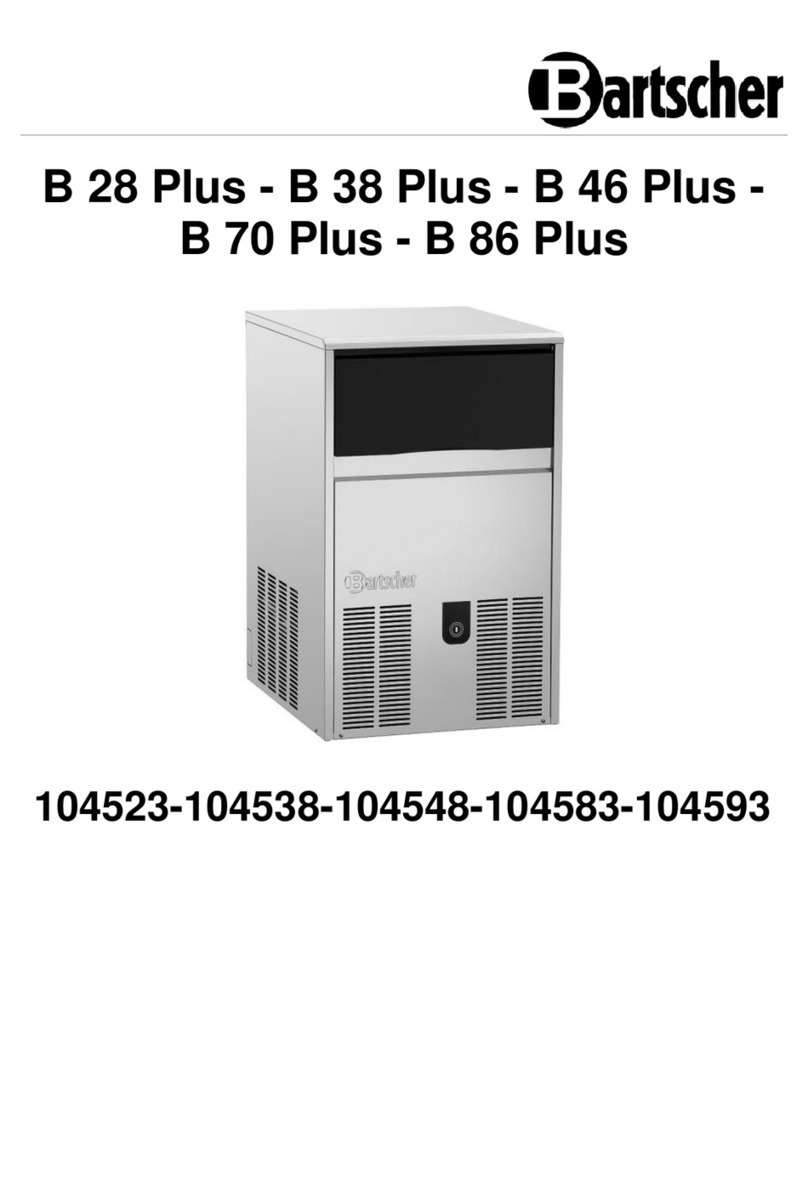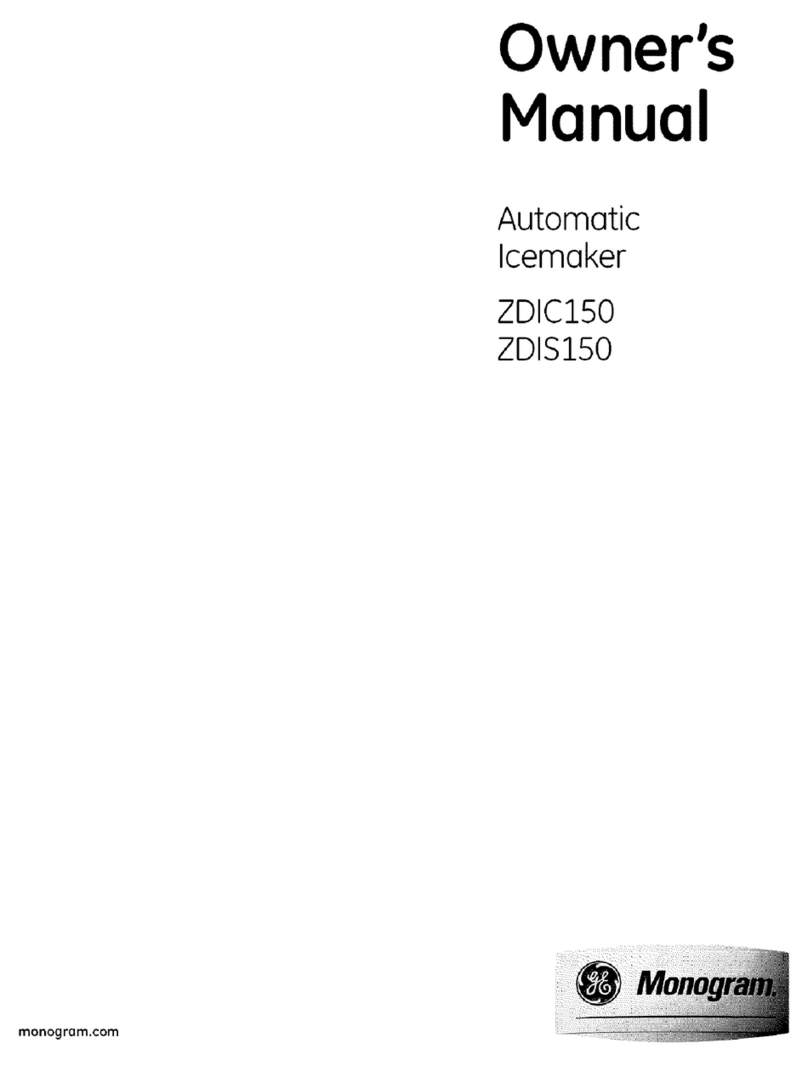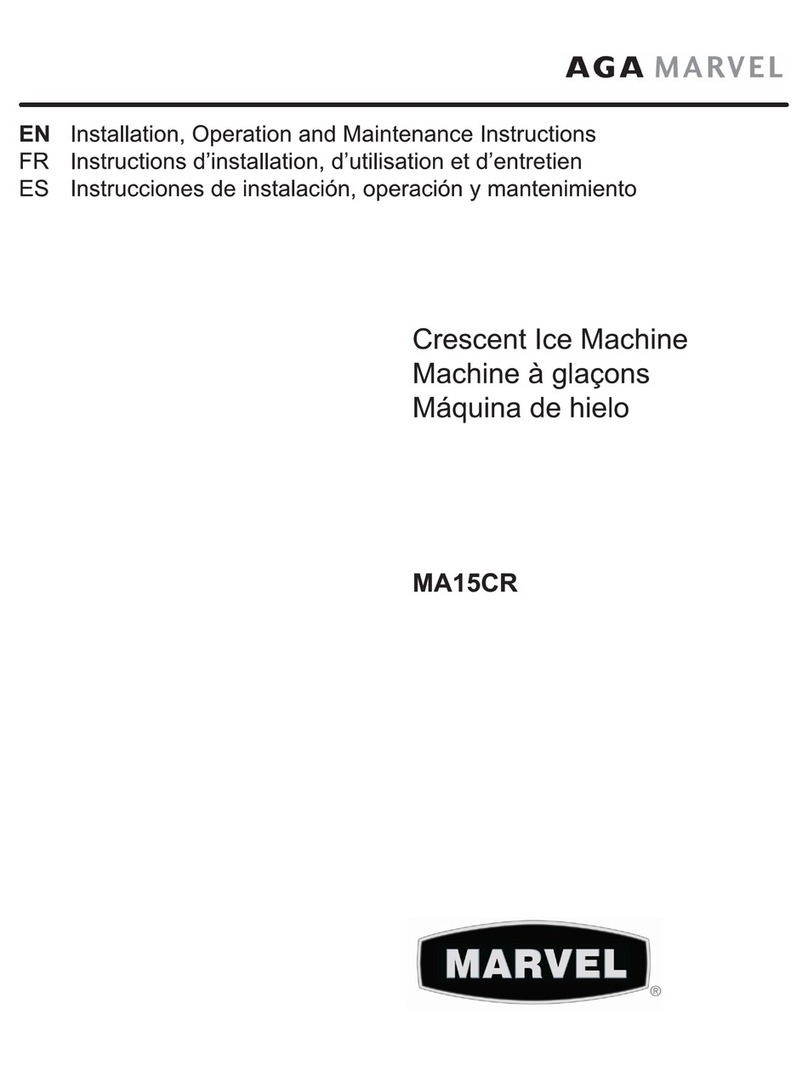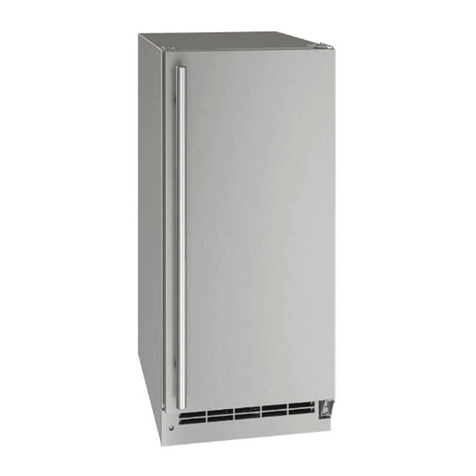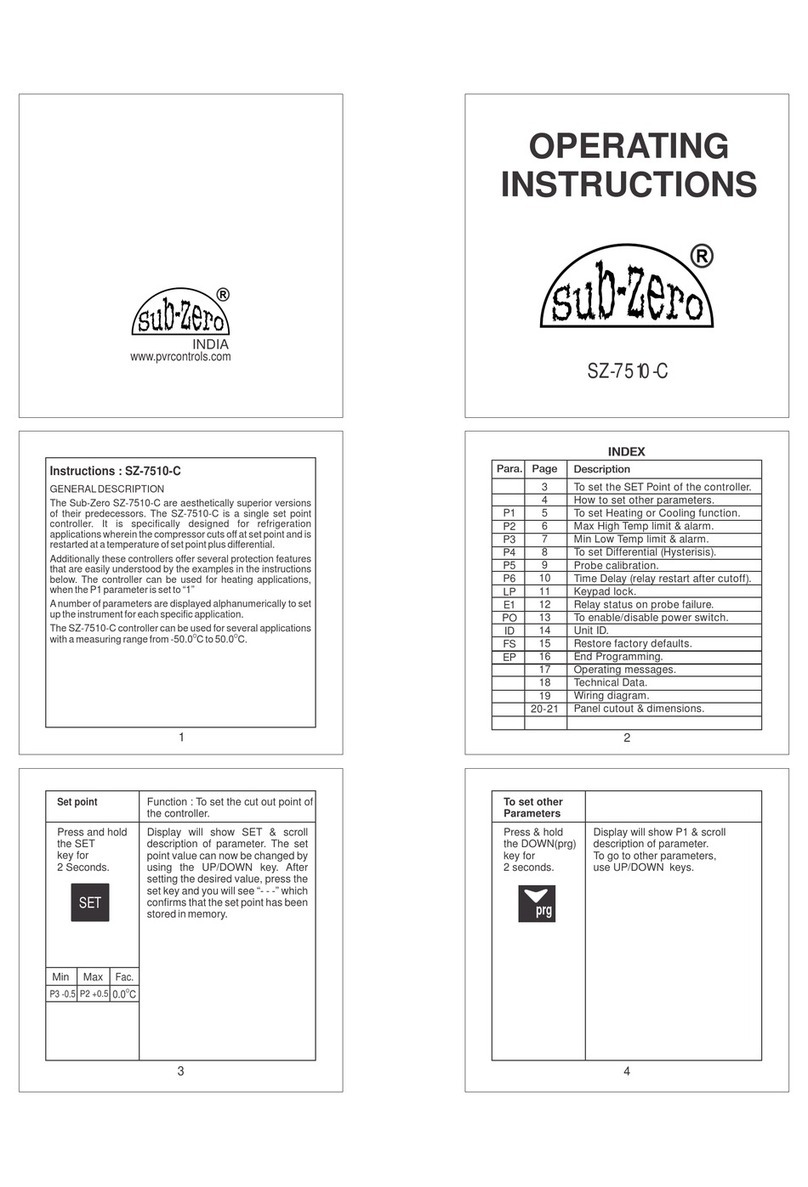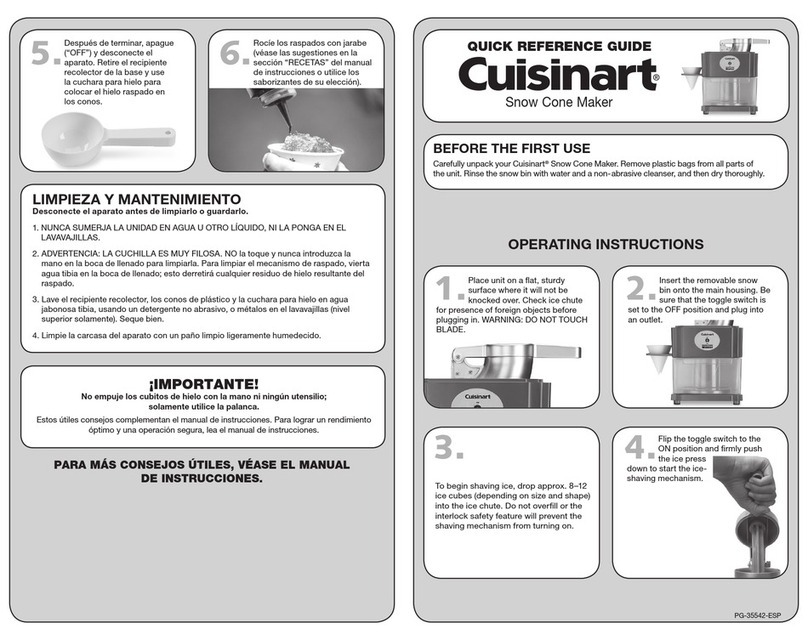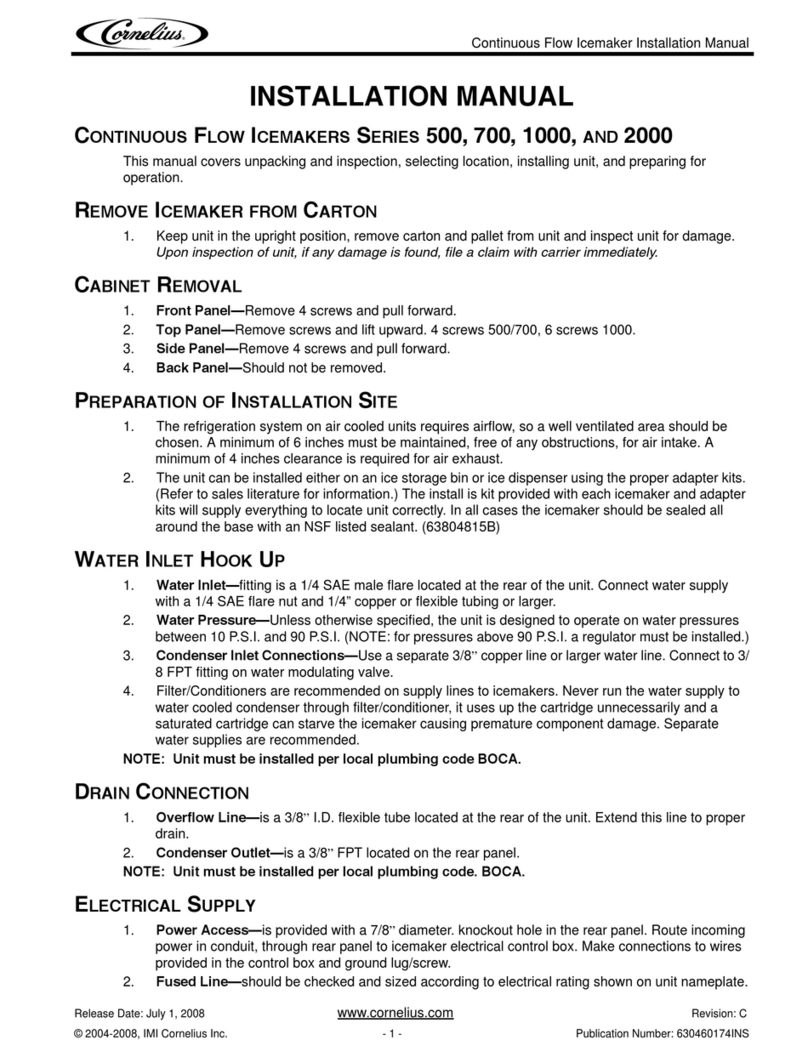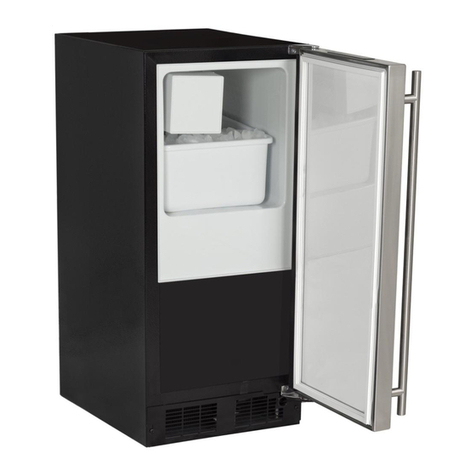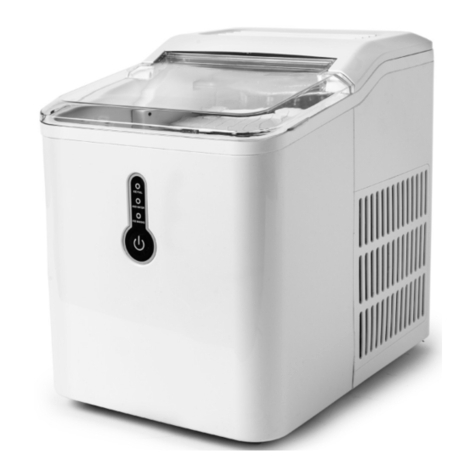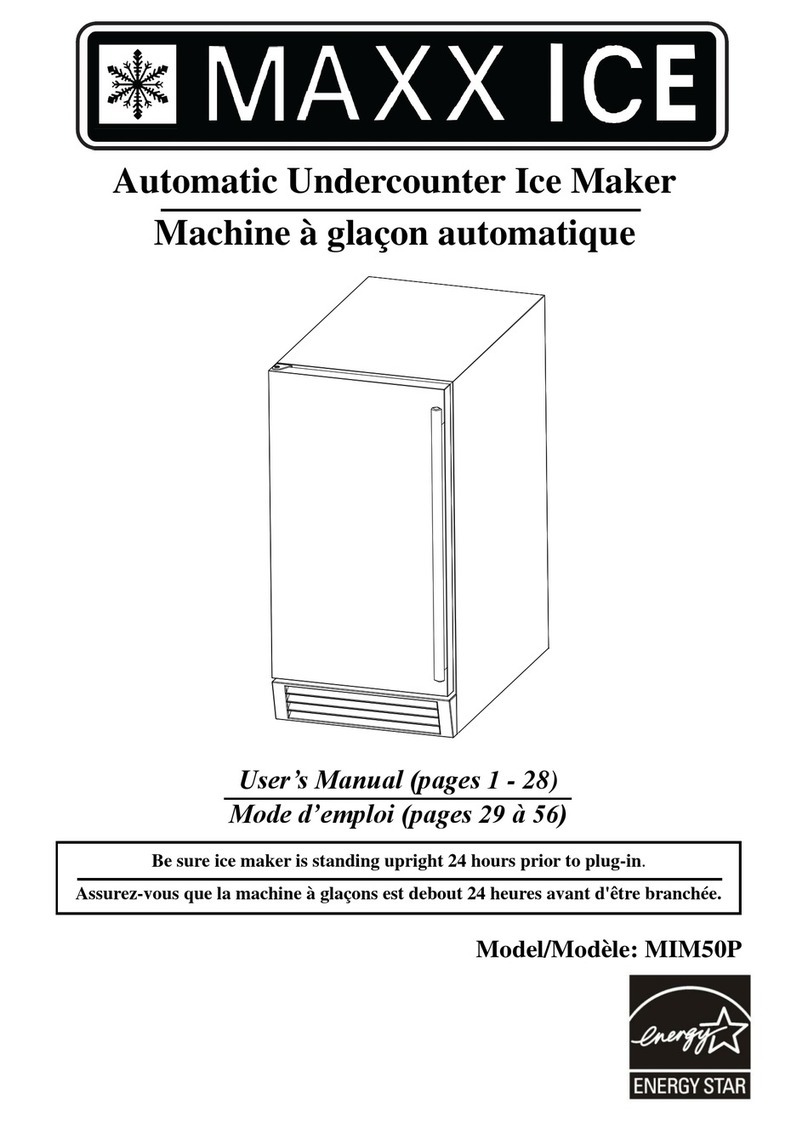SnoWizard SnoBall Operating manual

SnoWizard, Inc. * 101 River Road * New Orleans, LA 70121 * 1-800-366-9766 * www.SnoWizard.com
®
Another SnoBall season will soon be coming to a close for most operators. This is the
time to perform the annual maintenance on the SnoWizard SnoBall Machine®. A little
preventative maintenance now will prevent costly repairs later and your machine will be
ready to go at the start of the next season.
First, unplug the power cord to your machine.If your machine is like most, there will
be water spots and dried syrup on the exterior surfaces. Take a look at the underside and
you probably have a buildup of mold under the right side where water drips out of the
cabinet below the cutter head. There is probably a buildup of mineral or calcium deposits
on the interior of the machine and especially in the cavity where the cutter assembly fits.
Let’s start the cleaning by removing the belt guard and the cutter
assembly. To remove the belt guard, loosen the four wing nuts that
attach it to the cabinet. These should be finger tight only with no tools
needed to loosen and remove them. Slip off the belt as you would a
bicycle chain off a sprocket.
Next, remove the entire cutter assembly from the cabinet.
Check the opening on the right side where the cutter
assembly fits for calcium build up and mold. Make a cleaning
solution of hot water, dishwashing detergent with 1
tablespoon of bleach per gallon. Wet all of the interior
surfaces with the solution to sanitize the interior. Use a soft to
mild stiffness brush to scrub away any mold. The bottlebrush
works great for cleaning the interior where the cutter
assembly fits. Be certain to check the topside of the interior as
well. Carefully tilt the machine back on its legs and scrub the
underside with a utility brush. Once everything has been
scrubbed, thoroughly rinse the cabinet clean. Look it over to
see if any areas need to be redone.
Now that everything has been cleaned, it is time to apply a calcium deposit remover if
you have any buildup. Lime or calcium deposit removers can be purchased at most
hardware and drug stores. Follow the mixing and application instructions on the bottle and
apply the solution to all parts of the cabinet that have buildup. Depending upon the brand
purchased, a waiting period may be necessary in order for the solution to dissolve the
deposits. A Scotchbrite®pad may be necessary to get heavy deposits off. If a
Scotchbrite®pad or other type of scrubbing pad is required, be certain to move the pad
back and forth in the same direction as the grain of the stainless steel. When all of the
deposits have been removed, thoroughly rinse the surfaces to remove all cleaner. A hose
works really well here.
With the wing nuts and belt
removed a firm tug will separate
the cutter head from the cabinet. It
is not necessary to remove any
additional nuts or bolts from the
cutter assembly.

SnoWizard, Inc. * 101 River Road * New Orleans, LA 70121 * 1-800-366-9766 * www.SnoWizard.com
Cutter shown with 3 bent
fins. This occurred at our
own SnoWizard ® SnoBall
Shoppe when the operator
inserted an ice pick in the
chute to remove clogged
snow. Ironically, a water
sprayer mounted on the drip
pan, specifically for this
purpose, was not used by
the employee.
Now wet all of the surfaces again with the dishwashing liquid solution to sanitize it
once more. Let the solution set for about 3 minutes to do its work. Thoroughly rinse the
cabinet again with the hose and be sure to get the underside as well. When done, dry off
all the surfaces, inside and out. When finished, leave the door to the machine open to let it
air out and completely dry.
It is now time to service the cutter assembly. Let’s start by
removing the large pulley from the shaft. This is done by loosening
the set screw from the pulley with a 5/32” Allen wrench. Make sure
the stainless steel key is put in a secure place with the pulley for
installation later.
Next, slip the cutter out of the cylinder housing. If you have
performed regular maintenance and greasing of the shaft and
bearings, the cutter and shaft will easily slide out of the bearings
of the cylinder housing. If there is any resistance or the shaft
does not easily slide out of the bearings, do not use a hammer
or other object to tap or hit on the shaft. This can result in
damage to the shaft and cutter. Use a lubricant such as WD-40
and apply to the area where the shaft meets the bearings. Wipe
the shaft clean of any dirt or grit. Slowly work the cutter and shaft in and out of the
bearings with your hands. Apply more lubricant if necessary and wipe clean. Under no
circumstances should you hit on the shaft with a hammer or other object. If you need
assistance, please call us and we give you further instructions to safely remove the shaft.
Look at the fins and make certain that they are straight and not bent or damaged in
any way. Older machines built prior to 1983 will have a curved fin design. If the fins are
bent, then something was inserted into the snow spout while the machine was in
operation. Not to worry, though! If this occurs the SnoWizard SnoBall Machine®fins were
designed to bend, not break. This ensures that you will never be put out of business if an
object is inserted in the chute.
The fins can be straightened to their original shape with a pair of pliers (See picture
below). However, as the owner of the business, I’d want to find out who did it so that it
does not happen again.

SnoWizard, Inc. * 101 River Road * New Orleans, LA 70121 * 1-800-366-9766 * www.SnoWizard.com
Cutter has been neglected and shows severe mineral
deposit buildup. Regular cleaning and maintenance
would have prevented this.
This blade has cracked as a result of
calcium deposits which formed on the
underside. Water trapped between
the blade and the cutter caused a
catalytic reaction to occur. Calcium
crystals formed and pushed up
against the blade, cracking it at its
weakest point; the screw slot.
Remove the blades with a No. 2 Philips
head screw driver.
Next, remove the blade screws and all of the blades from
the cutter and set them aside. Then remove the 6 screws
that hold the fins in place and set the screws and fins
aside. Look at the cutter and cylinder for any mineral
deposit buildup. If there is any, clean these parts in the
same manner that the cabinet was cleaned. Make certain
to remove all buildup from the flat surfaces where the
blades fit. This is critical! If mineral deposits are left on
these surfaces, calcium crystals will form underneath the
blades. Since the blades are held firmly in place with
screws, the crystals will push up against the blades
cracking them at their weakest point - the blade slots.
At the start of each season, we have several customers who
bring their cracked blades in wondering what happened.
After an examination of the backside of their blades we saw
that they were coated with calcium deposits. What
happened? They simply turned off their machine at the end
of the season without performing any end of year
maintenance. The water trapped between the blades and
the cutter formed calcium deposits and when the deposits
formed crystals, which grew –they cracked the blades. Then
at the beginning of the next season when they went to
remove the blades to put in a fresh set, they found that their
blades had cracked. So it is very important to remove any
calcium deposit buildup from the blade slots.
Now let’s go back to the cutter. Once the cutter has been cleaned of mineral deposits,
thoroughly wash it with soapy water and then rinse it in very hot water.Let the water
run over the cutter until it heats up the metal. Dry the cutter off well with a towel. As best
as possible, blow through the screw holes to remove any water. Set the cutter down and
let it rest for a while so that all water can evaporate from the screw holes.
Cutter has been cleaned regularly and is well maintained.

SnoWizard, Inc. * 101 River Road * New Orleans, LA 70121 * 1-800-366-9766 * www.SnoWizard.com
Now it is time to start putting it all back together. Squirt a small amount of foodservice
grease into all of the screw holes. This is the Petro Gel grease that comes with your
machine. Use your finger to push the grease down into the holes. Attach the fins first.
Insert a screw into the tab of a fin. This is the part that screws into the hub of the cutter.
Turn the screw until it’s held in place by the threads, but not all the way. Then while
holding the fin up a little, insert the other screw into the tab on the fin and screw it into the
cutter. Turn the screws back and forth a couple of times. This will work the grease into all
the threads to thoroughly lubricate them. This is very important. If these screws are never
removed, then water seeps into the threads and calcium deposits form, locking the screws
in place over a period of time. If a fin ever needs to be replaced, the screws may not come
out since they were never lubricated. Finish attaching the remaining fins and thoroughly
tighten all of the screws when done.
The last thing to do is to install the blades. We highly recommend installing a newly
sharpened set of blades, so before you re-install the set that you took out, check to see if
they are sharp; really sharp. If they are, they will be able to shave the hair off of your arm.
Spread a thin film of grease on the blade slots of the cutter. Work the screws back and
forth to spread the grease throughout the threads. Install a sharpened or new set of
blades. Do not put the old set back in that were just removed if they are dull and need
sharpening. However, if they are sharp and you put them back on the cutter, check the
backside of the blades to make certain that there are no calcium deposits. If there is, then
remove the calcium deposits, and spread a thin film of grease on the backsides of all the
blades before installing them onto the cutter.
Now, take a look at the shaft and check to see if there is any buildup of any kind.
Also check the surface of the shaft for any small scratches or burrs that might scar the
bearing. Wipe the shaft off with a rag or paper towel to remove any dirt and grit. If there is
anything built up on the surface, remove it with a fine piece of steel wool or 400 grit
sandpaper by wrapping the polishing material around the shaft and turning it back and
forth with the palm of your hand. Wipe the shaft off when done and spread a thin film of
grease over the surface. Place a dab of grease on each of the sealed bearings and
spread it over the surfaces.
SnoWizard®machines built prior to 1983 have bushings and thrust bearings that require other maintenance. The shaft and
bushings must be checked for wear. To check this, the cutter housing must be assembled. Check this by alternately pushing
on either side of the cutter attempting to rock the cutter back and forth inside the cylinder housing. If the cutter can be
rocked substantially, then the shaft and/or bushings are worn and need to be replaced. This is the time to replace them so
don’t assemble the cutter and put it back on the machine. Order the parts and replace them now, before the start of next
season.
Reassemble the cutter according to the instructions in your
manual. Make certain that the pulley and cutter are kept
pressed together when tightening the setscrew on the pulley.
To do so, form a ball with a rag and place it on the face of
the cutter, up against the blades, at the same time turning
the cutter down towards the working surface (see picture).
This will keep the cutter recessed inside the cylinder. Place
the pulley on the end of the shaft and insert the machine key
into the slot. Press down on the pulley firmly while tightening
the setscrew. Assembly is now complete.
Install the complete cutter assembly back onto the machine with the v-belt and belt
guard. Turn the motor on and run it for a few seconds to make certain that everything
sounds normal and was assembled correctly so you don’t have any surprises on opening
day next season.

SnoWizard, Inc. * 101 River Road * New Orleans, LA 70121 * 1-800-366-9766 * www.SnoWizard.com
The threaded rod should also be cleaned and re-greased. This is
the part on top of the machine that is attached to the hand wheel and
pressure plate. Turn the hand wheel counter-clockwise to fully expose
all of the threads on the threaded rod. Wrap a small piece of rag around
the threads and turn the hand wheel back and forth to remove any dirt
and old grease. Place a small dab of foodservice grease on the threads
and turn the hand wheel back and forth to spread the grease
throughout the threads.
You should also inspect the legs of the machine for any mold, dried syrup or
calcium deposit buildup. Since the legs sit in the drip pan where water accumulates,
there’s a good chance that calcium deposits are present on them. Treat the legs in the
same manner as all other pieces to remove the deposits. Since you’re working on
cleaning the legs, why not give the drip pan a good scrubbing. Use the same solution of
dishwashing liquid and bleach to scrub the sides and bottom. You might want to plug up
the drain hole and pour in some extra sanitizing solution so that the entire bottom surface
of the pan is filled with water. Add a little extra bleach if needed and let the solution stand
for a while. The bleach should remove any syrup stains. Give the pan a good scrubbing
with the utility brush and thoroughly rinse the legs and pan with clean water. It should look
like new when you’re done. Dry the pan and be sure to get underneath the legs.
The last thing that you should do is to wipe down the entire exterior of the machine
with a polish. Furniture polish will do or you can use a lubricant such as WD-40 on a rag.
Rub the machine with a polish to remove any water spots or stains. The lubricant also
protects the cabinet from any surface moisture during the off-season.
O.K., you’re done! At the beginning of next season your machine will be in tip-top shape
and ready to shave fine fluffy snow. You won’t have any surprises on your opening day of
business. However, you should rinse out the machine with water and run a piece of ice
through the cutter before opening day to insure that everything is fine and that no critters
have used the machine as their home during the off-season.
Performing this maintenance at the close of every season takes only 30 to 45 minutes.
However, it is time well spent and needed if you want to keep your SnoWizard SnoBall
Machine®is top condition without requiring unnecessary service.
Place the cutter assembly on the cabinet
and hold it in place with one hand. Do
not put the wings nuts on.
Next, place the belt and pulley guard on
the threaded studs and screw on the
four wing nuts. No tools should be used;
finger tighten only.
While holding the cutter assembly
to the cabinet, place the V-belt on
the small motor pulley and rotate
around the large cutter pulley.
Table of contents
Popular Ice Maker manuals by other brands

Tramontina
Tramontina 80901/106 Use & care instructions
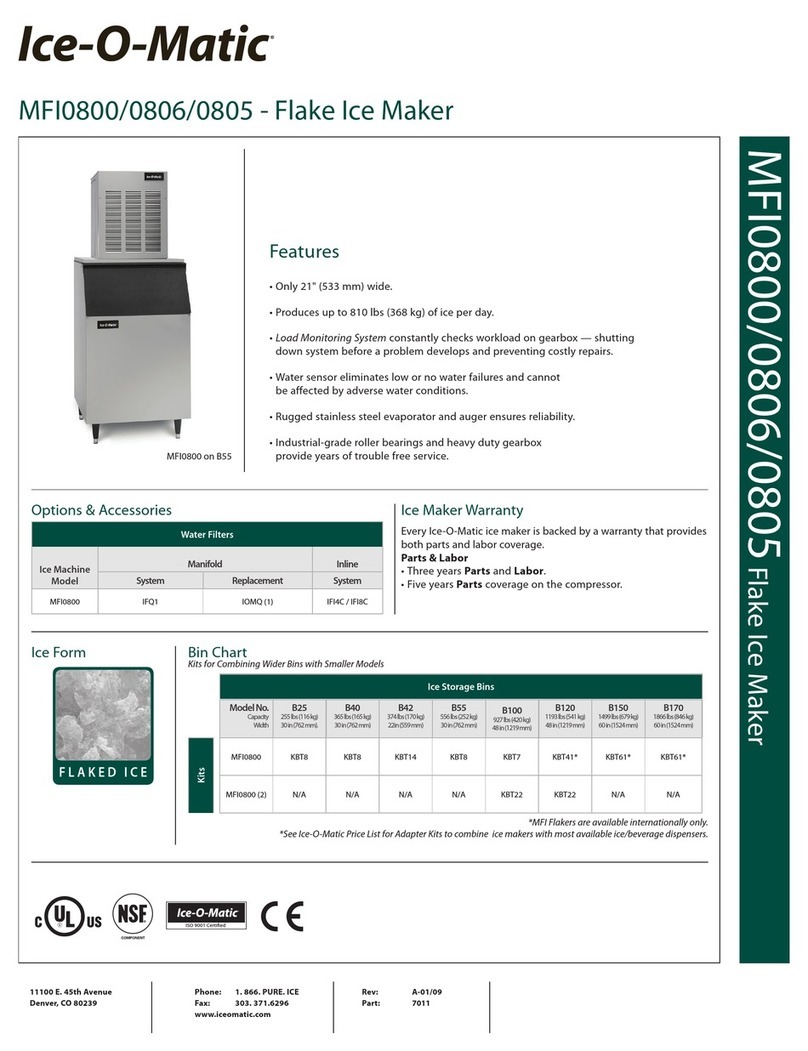
Ice-O-Matic
Ice-O-Matic MFI0800 Specifications
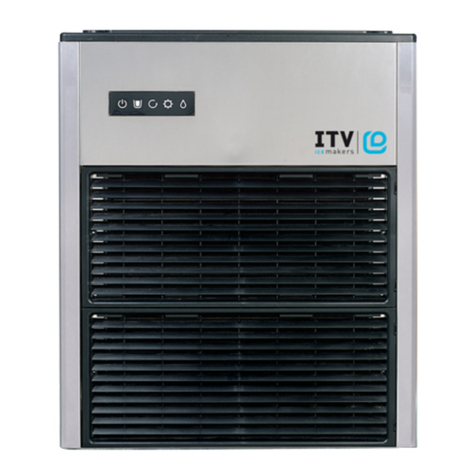
ITV ICE MAKERS
ITV ICE MAKERS IQF FLAKER user manual
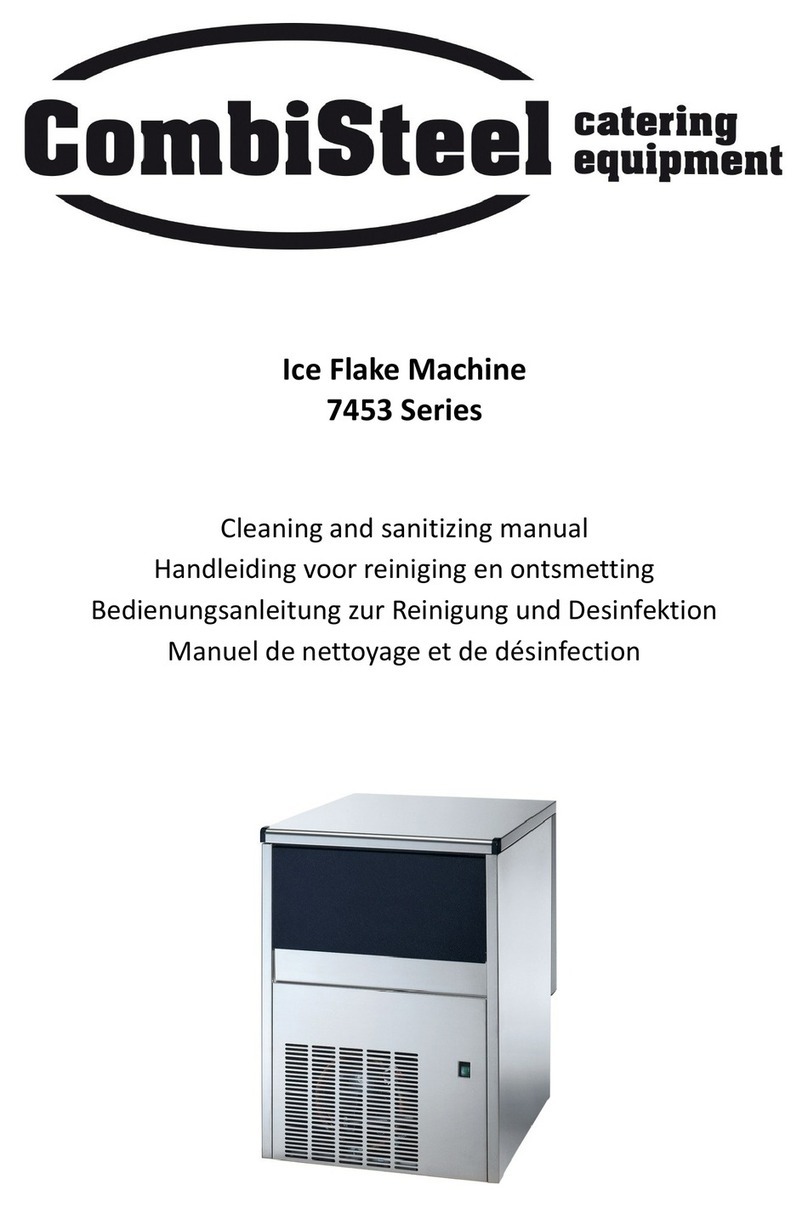
CombiSteel
CombiSteel 7453 Series Cleaning and sanitizing manual
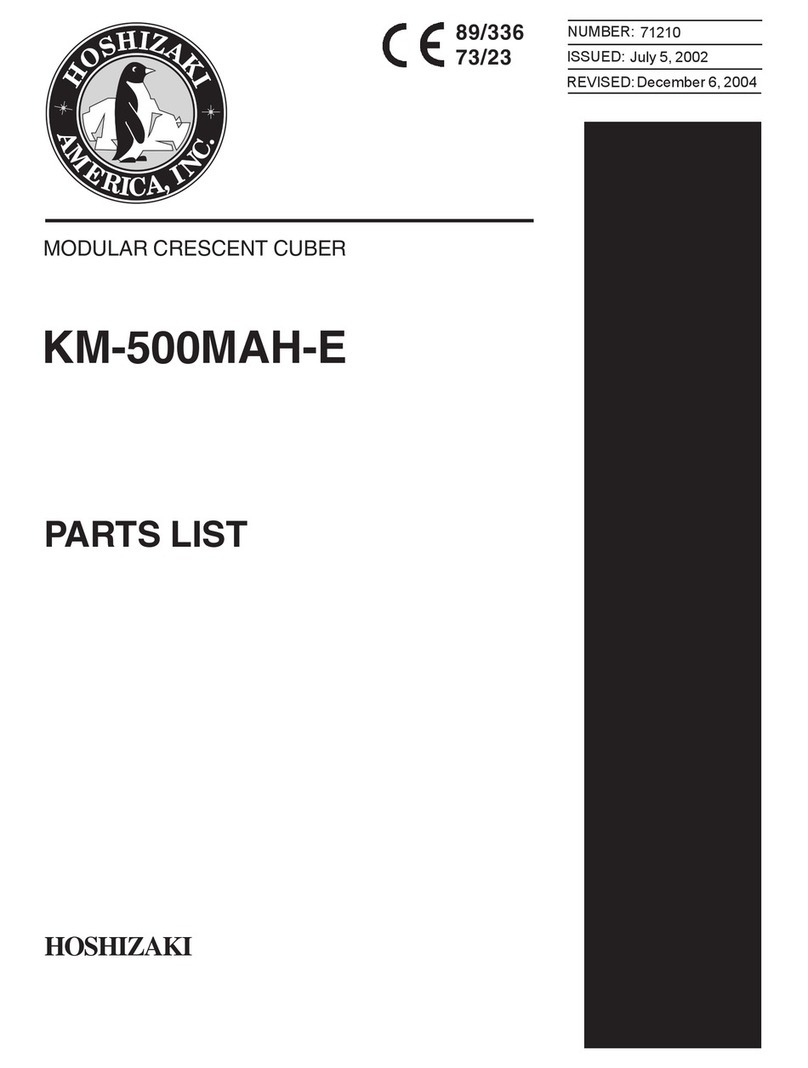
Hoshizaki
Hoshizaki KM-500MAH-E parts list

U-Line
U-Line UMCR014-D01A User guide & service manual
